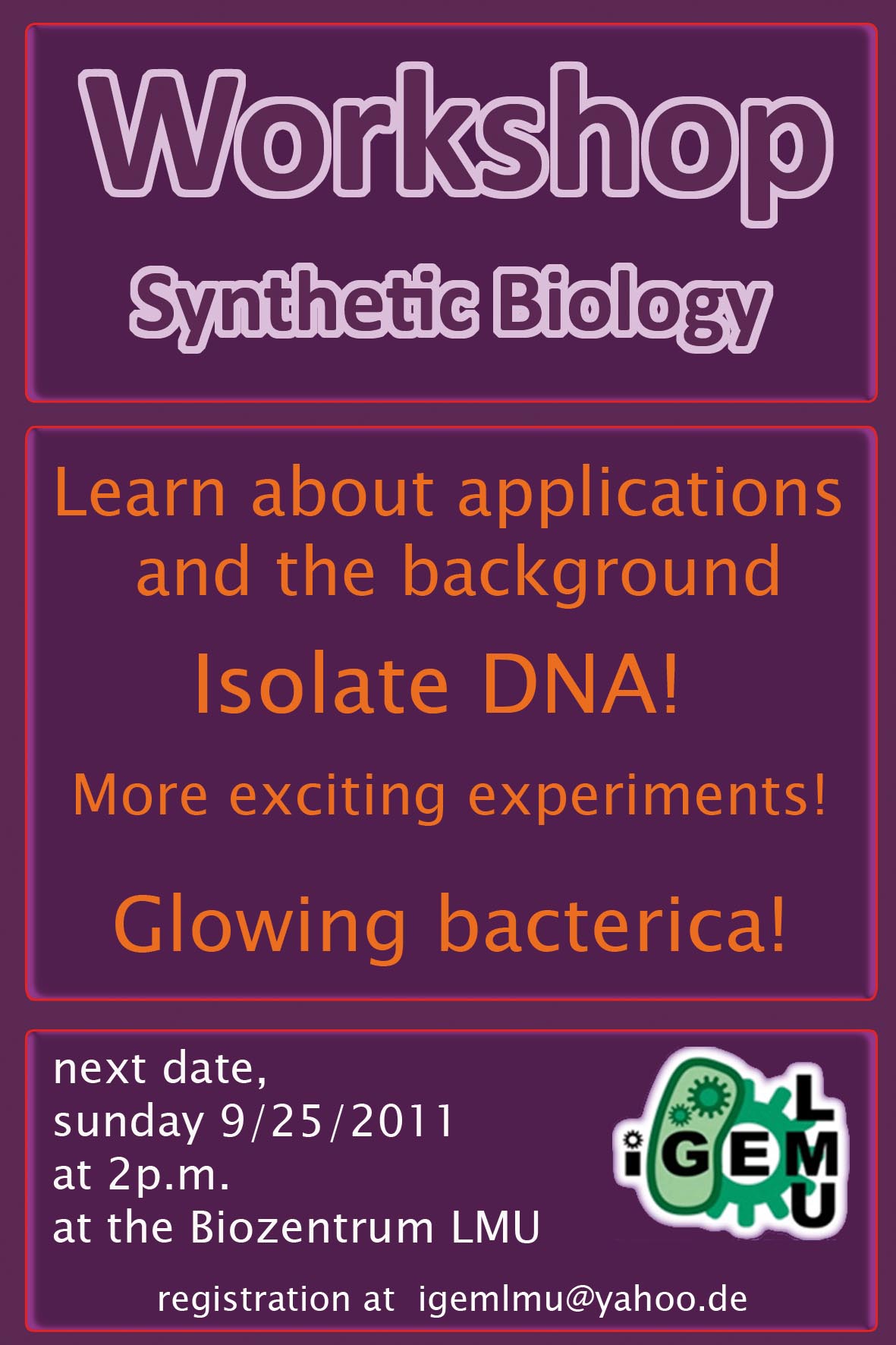Team:LMU-Munich/Human Practice
From 2011.igem.org
Our aim is to cooperate with schools in Munich in order establish Synthetic Biology as one of the possible electives.
Workshop Impressions:
In our first workshop, our participants learned about DNA, Plasmids, PCR and synthetic biology. They extracted DNA from bananas, watched fluorescent bacteria and hydra and developed own biobricks. Here are some pictures and vdeos from the workshop.
(Perhaps also the presentation.)
The Idea
As we found out in our survey last year, many people know only few things about biology and even less about synthetic biology. Therefore we developed a workshop to teach some basics of biology and synthetic biology.
Bacteria sense metals in their surrounding in order to change their expression profile or react in order to adapt and accomodate to their environment.
Using these sensors from (mostly) bacteria we create biosensors by linking them to the expression of a reporter (e.g. green glowing by the green fluorescent protein GFP). To not only qualify but also to quantify the metals, it is also necessary to measure the output by given input (metal concentration) for each of these biosensors. Afterwards one can determine the metal concentration by measuring the output.
The quantification needs heavy high-tech machinery ... something not always given ... especially in free field. So a qualification of metals with a easy-to-see output is also needed.
In the end our team hopes to have not only a set of metallsensors for precise quantification of a group of (heavy) metalls, but also an outdoor kit for qualifying metalls in more remote areas. With these it might be more easy and cheaper to determine the content of metals in our drinking water.
 "
"


